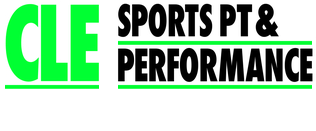The glutes- everyone’s favorite muscle. Let’s be honest- there’s no song called “I like big calves and I cannot lie.” Or “All about that neck” (no treble!). But strong glutes don’t just look nice in jeans- they prevent injury, improve performance, and increase running speed.
Sadly, for the amount of attention we give our butts, the majority of us don’t have the glute strength necessary for athletic performance. This happens for a few reasons, namely:
- Strength imbalances: stronger muscle groups such as the quadriceps, hamstrings, or even low back musculature “take over” for the glutes. As a result, the glutes never get stronger
- Improper training: performing lunges, squats, bridges or other exercises with poor form doesn’t build muscle properly, and can contribute to strength imbalances (see #1) or muscle atrophy
- Glute inhibition: Yep, you read that right. The glute muscles don’t work properly- this tends to happen after an injury or improper training. Surprisingly, glute inhibition doesn’t just happen after a hip injury. Glute inhibition is linked to knee and even ankle injuries- likely due to time an athlete spend on crutches (or limping). As Bret Contreras explains so well in his blog, the glutes are propulsion muscles. After an injury, the body inhibits the glute muscles to slow an athlete down and allow healing (pretty cool, eh? just another example of how amazing the human body is). After an injury heals, however, the muscles need to be consciously re-activated. This absolutely should be addressed during the rehab process as a PT should understand when and how to safely “re-activate” the glutes’ motor pattern.
So now that you all understand the importance of proper training- on to the research! This week’s studies come from the August Journal of Applied Biomechanics, courtesy of Bret Contreras et al.
The first study, looks at muscle activation of the glutes versus the hamstrings and quadriceps muscles during a back squat and barbell hip thrusts. Barbell hip thrusts activated the glutes to a greater degree than the squat when using estimated 10RM loads (what’s a 10RM? Check this out. Or this. Why is 10RM important for training like this? Find out here)
The second study looked at the amount of glute activity in different types of squats- full squat, parallel squat, and front squat. With 10-RM (see links to definitions above), all variations showed relatively same amount of glute activation.
BOTTOM LINE: barbell hip thrusts and all squat variations can build glute strength IF they done correctly. Check out my hip thrust/bridge variations below- start with these and work on using proper form. After mastering these, then (and only then!) you can add weight. Increasing weight without maintaining proper muscle activation will only add to strength imbalances, which would make all of your weightroom time a giant waste.
Modified Hip Thrust: start position
Squeeze glutes and slowly curl hips upward. Use glutes throughout- do not lift with low back, abs, or thighs
Find a workout Buddy if possible!





You must be logged in to post a comment.